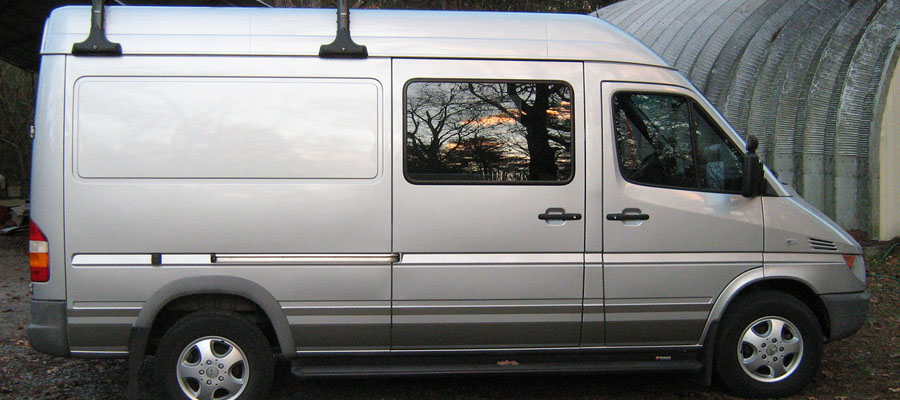
The fix for this issue, as devised by Sprinter guru Doktor A, involves a modification to the TCC spool valve circuit in the transmission valve body. The problem in the Sprinter that causes the RSN symptom is that the TCM’s lockup strategy is overly aggressive, calling for partial converter lockup at inappropriate times and eliciting the rhythmic drivetrain harshness that passengers experience as RSN. Under conditions that call for partial or complete torque converter lockup, the TCM sends duty-cycled pressure through the torque converter clutch control circuit and the TCC is applied as necessary. The Sprinter’s torque converter clutch operation is managed electronically by the TCM (trans control module).
#Sprinter t1n delphi diagnostic drivers
When it is severe, the noise can be a major irritation for drivers and passengers in the van, and it detracts from the otherwise smooth and refined Sprinter diesel powertrain. In some coasting or deceleration situations, the converter’s duty-cycled lockup activity can set up a rhythmic vibration in the drivetrain, creating a booming resonance inside the van reminiscent of the sound created by driving over a rumble strip in the road. Sprinter “rumble strip noise” is a syndrome that results from an intermittent transmission NVH condition, caused by the Sprinter’s over-active torque converter clutch duty cycle program.
#Sprinter t1n delphi diagnostic code
(If your Sprinter has its original radio, at this point you will want to make sure you have your radio security code on hand.) The battery should be disconnected before attempting to remove the glow plug relay, since the relay’s large B+ feed wire has a non-insulated terminal and requires tools to detach. Easiest access is obtained by removing the grille and LH headlight assembly. Sprinters have the glow plug relay located on the driver’s inner fender, tucked up underneath the battery tray. This van had a chronic check engine light with the typical glow plug failure codes stored replacement of glow plugs had yielded no improvement, so it was a likely candidate for relay failure. This is the only way to salvage a failed relay, and additionally it improves ease of service and dramatically reduces cumulative repair costs in the event of a future glow system short. The alternative is to modify the original relay and relocate the glow plug fuses to an external location, where they can be easily replaced individually in the event of a glow plug short without affecting the relay itself. For most owners, repeatedly replacing expensive glow plug relays is not a practical option. Worse still, if the system suffers another shorted glow plug in the future, the new relay will be damaged the same way the previous one was, and yet another replacement will be required. Unfortunately, list price can exceed $250 for the relay alone, less installation, so this is not a cheap repair. The standard repair in this situation is to replace the glow plug relay. Consequently that new glow plug will receive no power and provide no preheating in the affected cylinder, and the relevant trouble codes will continue to set even without any externally traceable glow system faults. However, if the plug fails shorted, it will blow the fusible link inside the GP relay for that cylinder, resulting in an open circuit that will remain even after the faulty glow plug is replaced.

If a plug fails open, replacing it and clearing the code is sufficient to restore proper function. (In fact, there are not five but six fusible links in the relay, since this same part is also used for the six-cylinder variant of this modular engine as found in the MB E320 of similar vintage, but for the 2.7L Sprinter application only five of the links are used.) Each of the five individual glow plug circuits is monitored by the glow controller, and if a fault is found with one or more of the plugs, the controller reports the problem to the ECU which turns on the check engine light and sets a DTC (usually both a P0380 general glow circuit fault and a P067x individual-cylinder fault where x = 1 through 5, identifying the number of the cylinder with the failed plug). Rather than a single external high-amp glow system fuse, as most diesels use, Sprinter vans feature a glow plug relay that has five small internal fusible links inside it. I had a chance to work on a van that showed up with both problems, and took some pictures as I carried out the diagnosis and repairs. Each can be permanently solved with effective and relatively simple modifications. The other is a syndrome known as “rumble strip noise,” which is an NVH phenomenon that manifests as a loud rhythmic booming that is audible inside the van in certain circumstances.

One is an internal failure of the glow plug relay that results in a check engine light with code indicating a glow plug fault even when all plugs are good.


T1N-platform Mercedes/Dodge/Freightliner Sprinters are susceptible to a couple of unusual issues as they age.


 0 kommentar(er)
0 kommentar(er)
